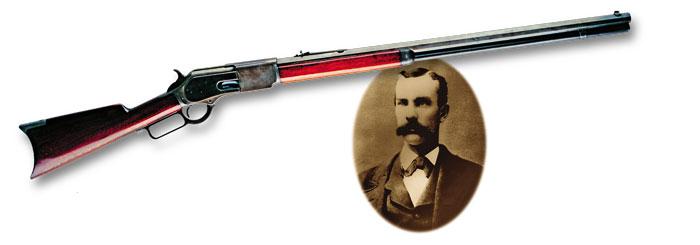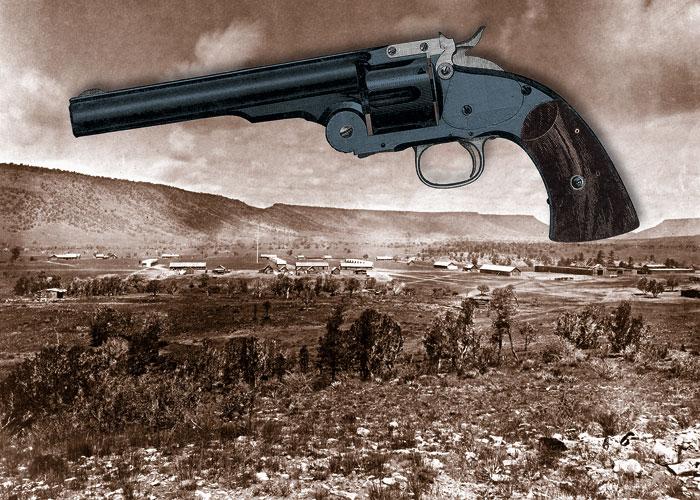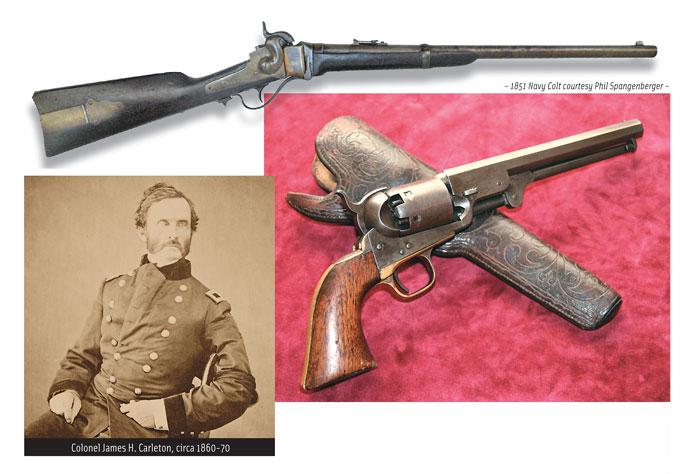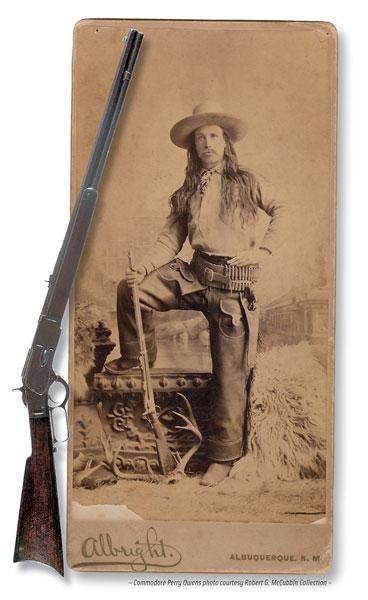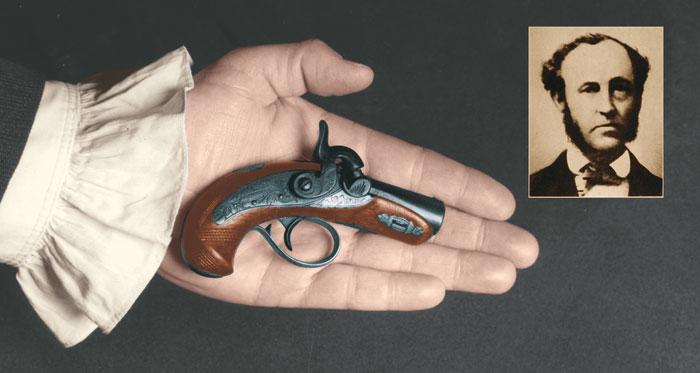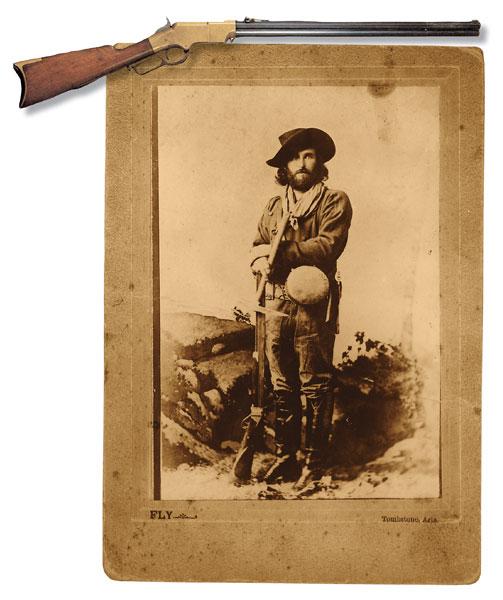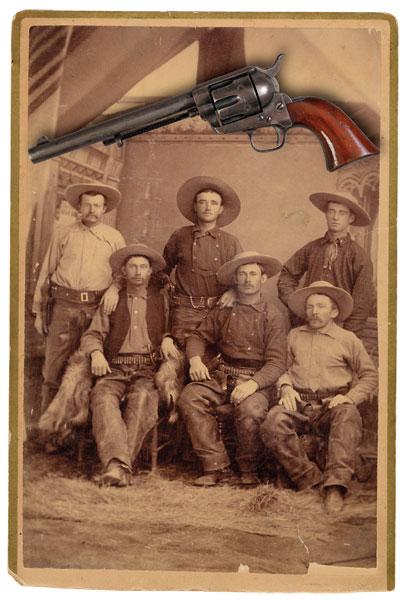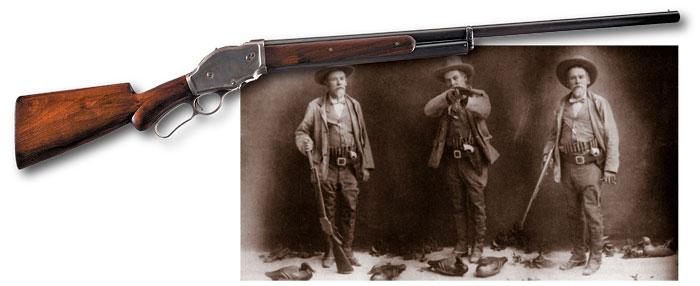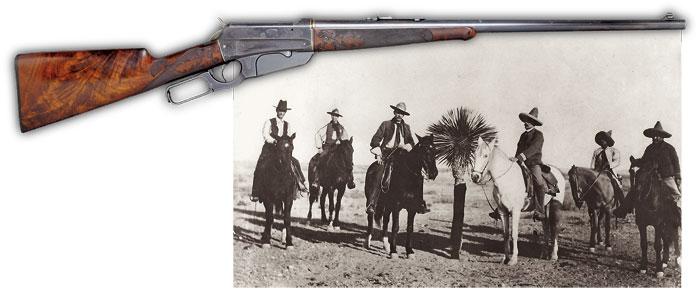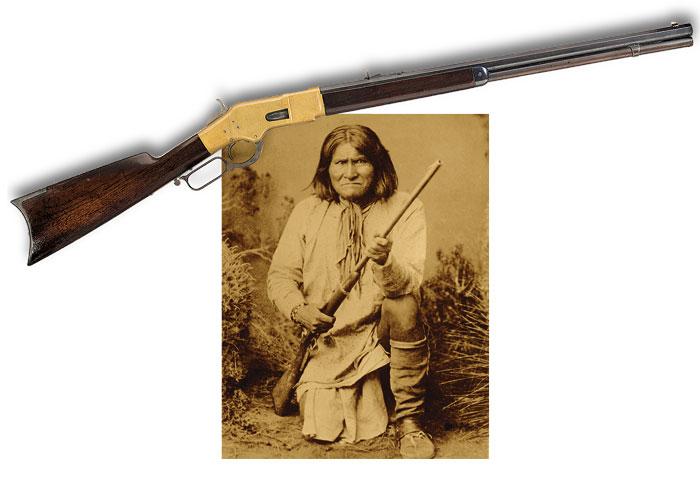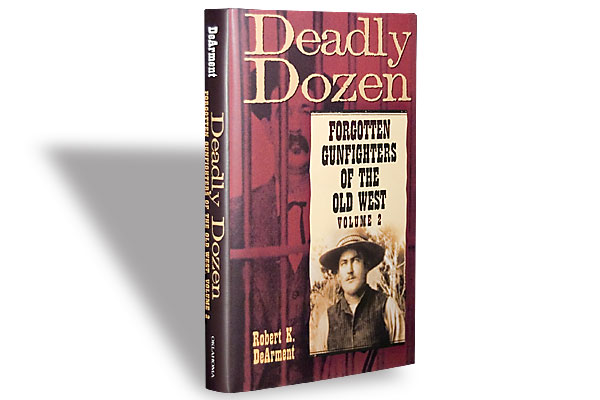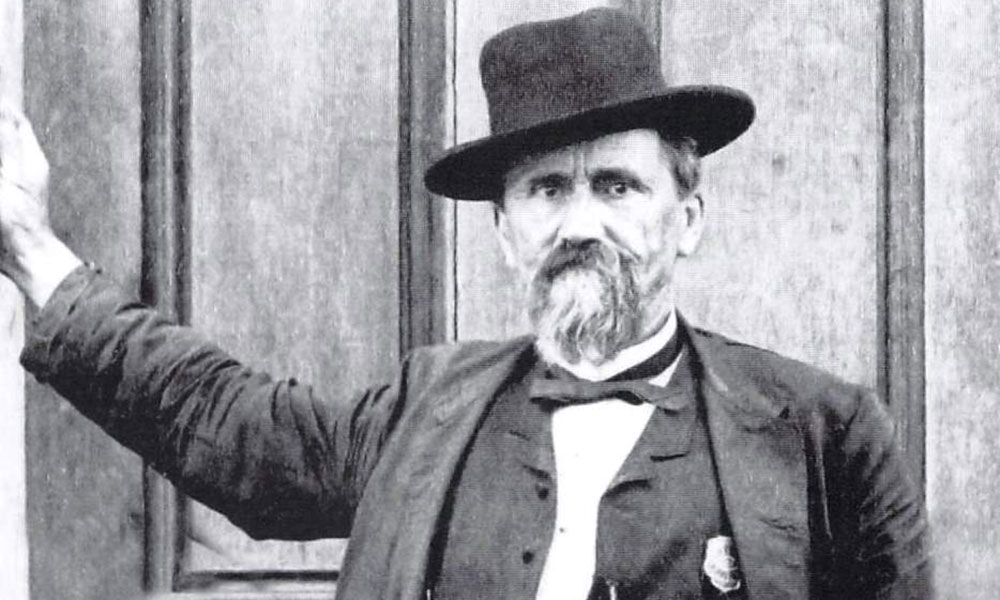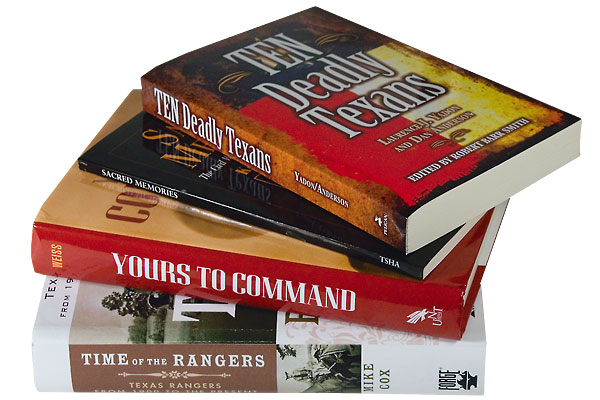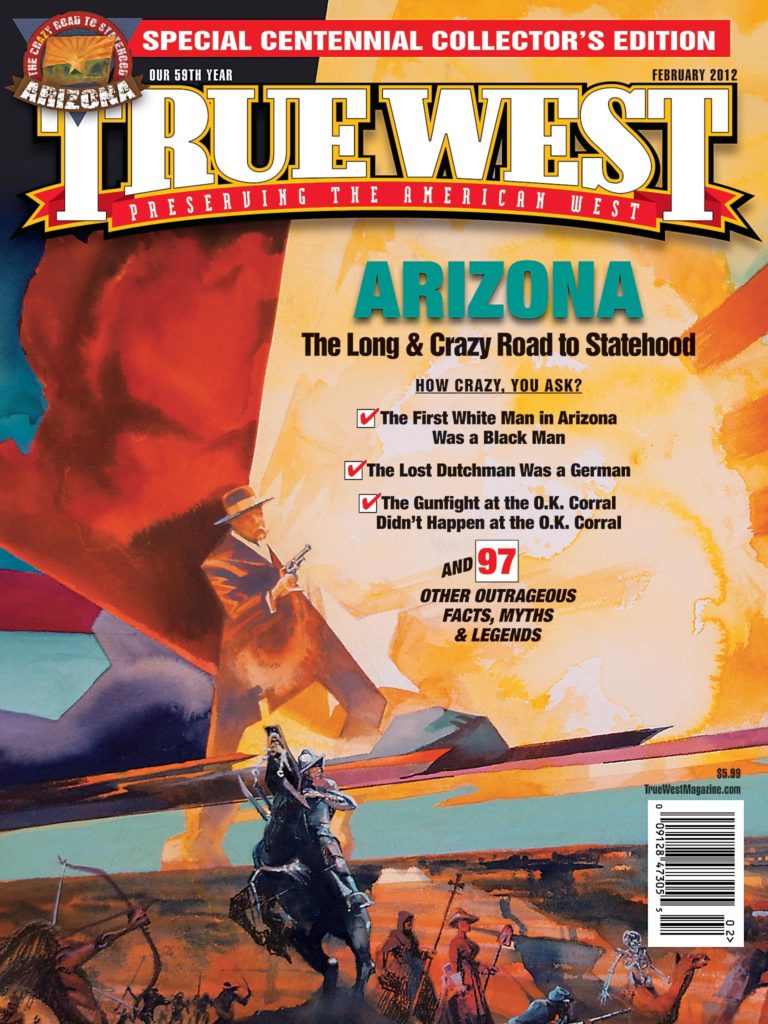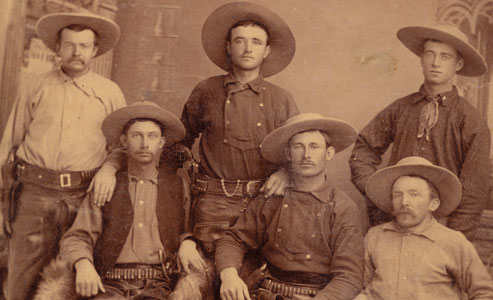 “Oh, it’s old Arizona again,
“Oh, it’s old Arizona again,
It’s old Arizona again;
With its greasers and bad, bad men,
They don’t do the Boston dip
But they shoot you from the hip
Down in old Arizona again.”
These are the words from one verse of the old Fourth Cavalry song that give an idea of the rugged conditions in the untamed Territory of Arizona during the frontier years, when the law of the gun prevailed. Indeed, Arizona was a rough and tumble land, and firearms were much needed, not only for protection, but also for hunting and for keeping law and order in this sparsely settled region of the Southwest. True West offers a look at 12 of the deadly firearms that made Arizona a hot place to be (not only for the climate), as well as aided in bringing peace and civility to this tumultuous land, thus allowing it entry as the 48th state in the Union.
Phil Spangenberger writes for Guns & Ammo, appears on the History Channel and other documentary networks, produces Wild West shows, is a Hollywood gun coach and character actor, and is True West’s Firearms Editor.
Photo Gallery
Major George W. Schofield of the 10th Cavalry and his brother, Maj. Gen. John Schofield, designed their revolver as an improvement over Smith & Wesson’s .44 Model 3 “American,” then a standard-issue sidearm of the cavalry. The U.S. military ordered nearly 8,000 of the 8,969 Schofields produced from 1875-77.
The army ended up opting for the 1873 Colt Peacemaker, which used a powerful load of 40 grains of blackpowder with a 250-grain lead bullet. Yet the Schofield, with its 28 grains of blackpowder pushing a 230-grain lead projectile, became the standard government revolver cartridge of the Indian Wars-era. Schofields were issued to the 4th Cavalry (whose troops fought in the Geronimo campaign) and the 9th and 10th “Buffalo Soldier” Cavalries—all units that fought Apaches in Arizona.
George Schofield, however, must have succumbed to the isolation of the Arizona wilds after the passing of his young wife in 1879; at Camp Apache, near Whiteriver, Arizona, he committed suicide (reportedly using one of his Schofield revolvers). You can get a sense of the desolation he must have felt by looking at the vast expanse of nothingness surrounding the camp, as shown in this 1873 photo taken during the Wheeler survey.
Although he could have found more powerful revolvers in California’s Benecia Arsenal stores, Col. James H. Carleton chose the .36 caliber 1851 Navy Colt as the sidearm for his First California Volunteer Cavalry. This cap and ball six-gun’s lighter weight allowed it to be carried on the trooper’s belt, rather than in pommel holsters on the saddle (as would be the case with the heavier .44 Dragoon models). He and his men, who were trekking east to join their brothers in blue, also carried an 1859 Sharps carbine and a Model 1840 Heavy Cavalry saber. The California column took these into battle with them on April 15, 1862, at Arizona’s Picacho Peak, marking it the westernmost battle between uniformed forces during the Civil War. Technically a Confederate victory, this skirmish began a series of withdrawals by the southerners, eventually causing them to lose their hold on the Southwest.
The 1873 Winchester was popular with cowboys and outlaws, because it chambered the same ammunition as the Colt revolvers many of them also carried, yet even lawmen in Arizona found good use for the rifle. In fact, Commodore Perry Owens made a name for himself with one of his Winchester repeaters (possibly a ’73) at an 1887 gunfight during the Pleasant Valley War. Owens was delivering a warrant on rustler Andy Cooper at the Blevins’ cottage in Holbrook when he was shot at by John Blevins and associates. Owens ended up killing Cooper, Mose Roberts and 15-year-old Samuel Blevins, who had run out at Owens with Cooper’s gun. The gunfight took less than one minute and made Owens a legend. The lawman, shown here with an 1873 Springfield “Officer’s Model” .45-70—believed to be a photographer’s prop—often relied on a Winchester repeater for his man-hunting exploits.
When prospector Ed Shieffelin ventured into the southern Arizona desert, he was told all he would find was his tombstone. Yet armed with his heavy Sharps rifle and a Henry repeater, he discovered silver in San Pedro Valley in 1877, which led to the founding of Arizona’s most storied town—Tombstone.
Among the guns used by Schieffelin were a .44 rimfire Henry repeating rifle (no. 2197), a Model 1874 Sharps sporting rifle and a pair of .44-caliber Smith & Wesson single-action revolvers. Schieffelin’s Henry rifle is exhibited at the 1882 Tombstone Courthouse State Historic Park.
Originally designed as a cavalry sidearm and dubbed the “Strap Pistol” by Colt, the 1873 Single Action Army revolver was named the “Peacemaker” by B. Kittredge & Co., one of Colt’s major distributors. That name stuck, and the firearm’s excellent balance, powerful metallic cartridge loadings, ruggedness and accuracy made it the perfect revolver for the frontier. The cowhands at John Slaughter’s San Bernardino ranch in southern Arizona seemed to prefer it; they posed for the photograph on the opposite page with six-guns that appear to be Colt Single Actions. The sidearm was generally the first choice of cowboys, the Arizona Rangers, outlaws and lawmen—including none other than Tombstone’s famed Wyatt Earp. With more than 192,000 made by the end of the 19th century, this handsome revolver was also known as the “Equalizer,” “hogleg” and other sobriquets, and just this past year, the Colt Peacemaker was named the “Official State Gun of Arizona!”
– Slaughter photo courtesy Robert G. McCubbin Collection; All other images True West Archives unless otherwise noted –
From 1873 until 1893, the army’s Model 1873 Springfield rifle and carbine were the standard-issue longarms of the soldiers in dusty blue. While the infantry “Long Tom” rifle utilized a loading of a 405-grain bullet with 70 grains of blackpowder, the smaller cavalrymen did not adapt to the heavy loading. Shortly thereafter, the cavalry cartridge was reduced to 55 grains of blackpowder, but used the same 405-grain lead slug. Army officials felt that the orderly squad-firing tactics employed by its troops allowed for the use of these less expensive to produce and operate single-shot weapons. For the most part, these harder-hitting longarms could reach out much farther than most of the arms used by the hostile Indians, so the Springfield did exactly what it was supposed to do!
Noted Arizona Territory lawman and rancher “Texas” John Slaughter was said to always pack a revolver, while he relied on several shotguns—including an 1887 Winchester lever-action model (shown here) for bird hunting and man hunting.
This series of photos reveals the Cochise County sheriff with his pearl-handled Colt Peacemaker and his ’87 scattergun. It totaled 64,855 units between 1887 and 1901. These chambered blackpowder 12-gauge shotshells, and later 10-gauge shells.
The ’87 Winchester was created the year Slaughter became Cochise County sheriff, an office he held until 1890. Why was the Arizona sheriff known as Texas John? He was a Texas Ranger before he and his brother formed a cattle transporting company. When Texas got too crowded for him in the late 1870s, he started a new ranch in southern Arizona, ultimately settling near Douglas.
– John Slaughter photo courtesy Robert G. McCubbin Collection –
Winchester’s 1895 model was the official rifle of the famed Arizona Rangers who did so much to bring law and order to this wild territory in the early 1900s, and they also helped bring statehood to the Grand Canyon state. In this photo of the Rangers, Capt. Tom Rynning is shown third from the left.
The territorial legislature established the Rangers in 1901, primarily to protect the cattle trade from rustling. Having served as superintendent of the famous Aztec Land & Cattle Company, Burton C. Mossman served as the first captain; he directed that the Rangers all carry the Model 1895 rifle in the standard army issue .30-40 Krag caliber.
– Winchester 1895 rifle courtesy Greg Martin Auctions –
When Chiricahua Apache war leader Geronimo surrendered at Fort Bowie, Arizona, in 1886, one of the rifles he turned in was an 1866 Winchester, although this photo of him shows him with a cut-down Springfield rifle. The West Point Museum records Geronimo’s Winchester with the serial #109450. The Model 1866 was Oliver Winchester’s first rifle, which he designed as an improvement on the Henry rifle. He remedied flaws in the Henry lever action by incorporating a loading gate on the side of the frame and a round sealed magazine covered by a fore stock. As you can see in the shown 1866 lever action, the repeater earned the nickname “Yellow Boy” because of its bronze alloy receiver.


